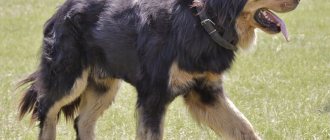Many pet owners are so sensitive to their pets that even on business trips and vacations they do not agree to fly without them. Renting a private jet makes such travel possible, because not only animal owners, but also their pets can be on board a business jet. At the same time, you do not need to check your pet in your luggage and expose it to stress - we will arrange for your dog or cat to be transported in the cabin of a business jet, near you.
However, such flights have their own transportation rules, which owners are advised to familiarize themselves with in advance, so as not to get into trouble during boarding by not taking the necessary documents and pet supplies from home.
Where will the animal fly: in the cabin or in the luggage compartment
Dogs commonly fly as service or emotional support animals. On this American Airlines flight, a specially trained miniature horse was allowed into the cabin along with the passenger.
Transporting animals in the cabin as hand luggage
Pets are usually allowed into the cabin if they weigh up to 8 kg together with the carrier. Occasionally it can reach up to 10 kg - for example, Alitalia.
For maximum weight and carrying requirements, see the airline's website. Among the general rules: the size of the container is 105–135 cm in the sum of three dimensions, it is well ventilated and closes securely, the bottom does not leak (can be covered with a disposable baby diaper), the pet inside stands up to its full height and does not rest its head on the lid.
From February 14, 2022, Aeroflot has reduced the size of containers for transporting animals in hand luggage. Now the size of a carrying bag in the sum of three dimensions should not exceed 126 cm, and a rigid container cannot be more than 44x30x26 cm in length, height and width.
Airlines typically allow both soft and hard carriers for dogs and cats in carry-on luggage. In the cabin they are placed under the seat in front. According to the rules, the pet must sit in its temporary house during the entire flight. Sometimes they are allowed to put two animals in one container.
Some airlines don't allow pets in your hand luggage if you're flying business class; Finnair says this is because there's no space for cages under the seats.
A service dog and a guide dog will also fly in the cabin - even if they are lean shepherd dogs. Such animals need documents about their “profession” (in addition to all others), they must be wearing a collar and muzzle. The owner may need proof of disability. Psychological support dogs may be carried in the cabin or in the hold, depending on airline regulations.
As a rule, pets are taken into the cabin in addition to the usual piece of hand luggage, and not instead. Naturally, for money - read how to buy a plane ticket for a pet.
In some destinations, transporting animals in hand luggage is prohibited, for example, to the UK, where animals are sent only by cargo. Airlines have similar rules: on Emirates planes, all animals are sent to the hold.
Transporting animals by plane will be hassle-free if you follow simple instructions.
Transporting animals in luggage
Animals that, together with the container, weigh more than 8 kg will have to be checked in as baggage. They can also send a dog of an aggressive breed there, even if its weight makes it into the salon.
The maximum weight depends on the aircraft - 50 kg, for UIA - 75 kg, and may depend on the direction. If your pet is heavier than expected, it can be sent as cargo. In what other cases this may be useful, read the article about the official rules for transporting pets.
Which carrier to buy for an airplane
A regular cage is not suitable for transporting an animal into the luggage compartment. It's easiest to ask the store for a container that meets the IATA standard, but be sure to double-check that it matches your airline's requirements. Here, for example, are the rules for transporting animals at Aeroflot.
Fighting dogs may require reinforced cages: to give you an idea of what we're talking about, here's a description of them on the Lufthansa website. For heavy dogs, it makes sense to add wheels to the crate, but be sure to remove them before putting them in your luggage.
Before the flight, the bottom of the cage is covered with waterproof diapers: stick it with tape so that it does not move out. Alternatively, you can use special absorbent diapers for animals. Place a blanket or blanket on top.
Do I need to feed animals during the flight?
There are different opinions about pet food in luggage. Many people are afraid that their dog will get an upset stomach due to stress, so they don’t feed them at all on the day of the flight. Others provide a small treat before the flight. If you are not sure, consult your veterinarian. Water is usually poured. To prevent it from spilling during loading, experienced owners, before sending it to the luggage compartment, ask for ice at the nearest cafe and put it in the drinking bowl.
If you are not bringing a dog or a cat , everything is more complicated. Read what animals cannot be transported in hand luggage and luggage and what to do if yours is among those prohibited.
Why you should choose a business jet to fly with a pet
Business Aviation recommends traveling with pets only on private planes, because the strict rules of regular airlines do not allow pets to be transported in good conditions: there, animals huddle in cramped cages in the luggage compartment with a complete lack of heating and air conditioning. All this negatively affects the mental state and physical health of live cargo.
Business jets create comfortable conditions for owners and their animals, since on a private jet the pet sits next to its owner. If he starts to get nervous, then you can immediately encourage and caress the pet, and, if necessary, feed it. At the same time, the animal will not disturb the rest of the charter passengers, because only relatives and friends of the pet owner are in the cabin of the business jet.
Transportation of animals by air. How dogs and cats cope with flying in the luggage compartment
Transporting animals on an airplane is an exciting experience for everyone.
But stress can be reduced. There are horror stories on the Internet about frost on cages and pneumonia in dogs and cats after a flight in luggage. This is nonsense: the luggage compartments in which animals are transported are ventilated and heated. The climate is not a resort, but at least +10–15 °C will be provided, and sometimes +25 °C happens. The exact temperature depends on the aircraft model and can be obtained from the airline customer service. Alert owners already on board ask the senior flight attendant to confirm that the heating is turned on in the luggage compartment.
But it is true that animals get nervous and sometimes fall into real panic in an unfamiliar place without their owners. Many are lucky, and in the darkness or dim light of the luggage compartment, their faithful friends calm down and fall asleep. In other cases, the pet howls the entire flight and by hook or by crook breaks out of the cage.
How to calm your dog or cat before a flight
In order for your dog or cat to endure the flight more calmly, it is worth preparing them well in advance. Six months in advance, or even earlier, buy a carrier that meets the airline's requirements, put a cozy, familiar bedding and toys in it - it should become a favorite corner, not a detention cell. Let the animal get used to the cage at home.
Many people use sedatives and/or sleeping pills to transport animals in luggage. Be careful with them: on the one hand, the animal is less afraid, and on the other, no one knows how the introduced substances will affect the body during overload. This is a case where it is easy to cause harm, so be sure to consult your veterinarian about medications and, if possible, use proven products to which your pet has no adverse reactions. Place a sticker on the container with the name of the product, dose and time of administration.
Some veterinarians believe that it is worth giving your dog or cat mild herbal sedatives like “Fitex” or “Kot Bayun” 7-10 days in advance, and not giving or injecting anything on the day of the flight. Discuss the exact regimen with your doctor.
“There was a veterinary service at the airport that you could contact with a request to inject the animal with sleeping pills for the duration of the flight. We contacted us in advance, so by the time we arrived, a doctor was already waiting for us with a syringe at the ready. We checked our flight, estimated the time, and the doctor assured that the dog would definitely sleep even longer than the flight. They injected me - and then the flight began to be postponed. First for two hours, then for another three, in the end we took off 8 hours later.
When it became clear that there definitely wouldn’t be enough anesthesia (our flight lasted 10 hours), we found the same veterinarian, but he, naturally, refused to add more. As a result, the dog woke up at the beginning of the flight and spent another 8 hours in a cage in the luggage compartment. Then it turned out that with her teeth she bent the metal bars of the cage, half a finger thick, and tore the mattress into small shreds. Before the flight, she was a tender and emotional young lady. And at the arrival airport we received an inappropriate hysteria - forever.”
Stanislava Evminova shared her sad experience of flying with a dog
Don't be scared! More often than not, everything goes well: read a story with a happy ending about flying with a dog to Samui and look at the inspiring photos published by Irina Goldman, who has traveled halfway around the world with her husky named Space.
“Space has been traveling since he was 4 months old, and in the last year alone we have had 20 flights. She is my best friend, and I am sure that a dog left without an owner for two weeks is more stressed than a few hours in the luggage compartment. Before the first flight, to make her feel comfortable, I trained her to crate. Now there are always favorite treats and a blanket there. I don't give you a sedative. Space is already used to it and can easily handle even transatlantic flights.”
Traveler Irina Goldman
What are the dog-friendly directions?
Here is a subjective top with those flight directions where it will be most comfortable with a dog. We did not take Muslim countries - there religion does not even allow touching dogs and there will be many problems just with a walk on the street. We crossed out options where dog-friendly infrastructure is poorly developed - cafes, hotels and public transport for guests with dogs. We did not include those countries that require quarantine to enter, and we asked experienced dog travelers about their experience.
Europe: almost equal rights for dogs and people
Lyuba Korobkina
Graphic designer, traveling with German Spitz Archie since 2015
All of Europe is very dog-friendly. The French and Italians are crazy about dogs. Each grandmother smiled and shouted after us something like “Ma-bello-piccolino-belissimo-puffini!” Austrians are much more reserved and stingy with emotions.
We always took Archie with us when we walked around the city. In all the cafes and restaurants we were welcome and brought a bowl of water. One day I walked into a bakery with Archie in my arms, and the owner began to reprimand me something sternly, pointing her finger at the dog. I tried to apologize for entering, but she didn’t let up, caught up with me at the entrance and gestured that the dog needed water - as it turned out, she didn’t kick us out, but offered to give the dog something to drink.
We had to go to veterinarians a couple of times, and it turned out that veterinary services in Europe are very expensive - the price of a visit with prescribed medications was 150-200 euros. But the level of the clinics cannot be compared with our private clinics for people. Aromatherapy, humidifiers, the latest equipment that I have never seen. Well, excellent drugs and medicines. We also had no problems with local transport. Dogs are prohibited on buses, but small ones are allowed in bags. On trains you need a dog ticket, which costs half the price of a human ticket.
Russian north: deserted spaces and mosses
Dmitry Kuznetsov
Bar manager and chef at the Enthusiast cafe, traveling with Australian heeler Fiona since 2016
In the North, Fiona liked it almost more than in the Crimea: not a single cat, huge intelligent dogs and a lot of sand, which she ate so much on the first day that she had to hold an Internet consultation in the night, which decided: either the sand would come out or not . In the second case, there were no options, and there were no veterinary clinics at the ends of the earth either. By the power of thought and Fiona’s peristalsis, the sand finally came out on the second day, and on the third day the aurora came out. Fiona was less impressed by it than, say, moss, in which you can wallow endlessly. Or the Arctic Ocean, which is worse for her than airplanes.
How to buy a plane ticket for a dog, cat or other animal
First, make sure that the airline allows you to carry your pet. The most reliable way to transport a specific pet is directly to the carrier.
Select a date and flight, and before purchasing , call the airline and ask if you can bring your pet. Airlines have restrictions on the number of animals on a flight: for example, no more than two cages can fly in the S7 cabin at a time. Antagonistic animals, for example, a cat and a dog, may be denied transportation in the same cabin. This means that if another passenger has already informed the airline that they will fly with a dog in their hand luggage, then they will offer to check your cat in their luggage.
If transportation is given the go-ahead, then buy a ticket and immediately call the airline back to coordinate the transportation of the animal. The deadline for such a call is 36–72 hours before the flight departure (depending on the airline), but it is better not to delay so that other passengers do not take up the pet quota. The call center will either immediately confirm the transport of the animal or call you back in a day or two.
“I usually book a ticket without paying, then call the airline and say that I’m flying with a dog. Having received confirmation that the quota for animals has not been selected, I buy the ticket and call again to get final permission to transport.”
Traveler Sergei Markovsky, who often flies with his Airedale terrier Arto
How and by when you need to pay for transporting an animal, check with the call center. You may be asked to pay at the airport at a special ticket office during check-in, in advance on the airline’s website, or by phone via a voice menu.
Prices depending on the type of business jet
To clearly show the high dependence of the cost of a flight on the type of aircraft, we have collected approximate data on the price of 1 flight hour for various types of business jets:
- Large aircraft (like Legacy 600) - from 5800 to 6800 euros per flight hour;
- Business airliners - from 12,000 euros per flight hour;
- Light aircraft - from 2500 to 3500 euros per flight hour;
- Long-haul aircraft (like Global 5000, Gulfstream G550, Falcon 7X, etc.) - from 6800 to 10200 euros per flight hour;
- Medium aircraft (like: Cessna Citation XLS+, Hawker 800XP, etc.) - from 3600 to 4400 euros per flight hour;
- Turboprops and turboprops - from 1000 euros per flight hour.
- Large middle-class aircraft (like Challenger 300, etc.) - from 5400 to 6500 euros per flight hour;
- Small aircraft , from 2000 to 3000 euros per flight hour;
You can calculate the cost of a flight for your desired route for free in several ways:
- using the online calculator on the website - the calculation is approximate and only shows the order of the price;
- via messenger - by writing to us on WhatsApp or Telegram;
- by calling us on a landline or mobile phone;
- via email
In order for airline consultants to respond to you as quickly as possible, please provide as complete information as possible on the flight route, number of passengers, business jet preferences, as well as other wishes. This will help you choose the most suitable options for you at the best price.
How much does it cost to bring a dog or cat on a plane?
Ready for takeoff!
Animals are not included in baggage allowance and are not carried free of charge by any airline.
Only guide dogs accompanying blind or deaf passengers and service dogs, and sometimes psychological support dogs, fly without additional payment.
Payment for other pets depends on the airline and comes in two types: fixed and by weight. Weigh the animal along with the container.
How much does it cost to transport dogs and cats on different airlines?
AirlineOne way transportation priceAeroflot On flights within Russia - 3,750 rubles, on international flights from September 15, 2022 - 200 $ or € (depending on the route, previously it was only 75 $). UTair On direct flights within Russia: in the cabin - 3,000 rubles ., in luggage a pet weighing up to 20 kg - 3000 rubles, 21-30 kg - 6000 rubles, 31-50 kg - 9000 rubles. On direct international flights: in the cabin - 50 €, in luggage for a pet weighing up to 20 kg - 50 €, 21-30 kg - 100 €, 31-50 kg - 150 €. Ural Airlines On flights within Russia - 2500 rubles, in the CIS - 35 €, in non-CIS countries - 60 €. Pobeda Transports animals in a container with a total weight of up to 8 kg only in the cabin. 1999 rubles online and through the call center; 3000 rubles at a Russian airport; 55 euros at a foreign airport. Nordwind (“North Wind”) Transports animals only in the cabin. On flights within Russia - 2250 rubles, on international flights - from 35 to 62 $ or € (depending on the route). Turkish Airlines On flights within Turkey: in the cabin - 80 liras, in luggage for a pet weighing 9-15 kg - 120 liras, 16-22 kg - 180 liras, 23-28 kg - 220 liras, more than 28 kg - 260 liras. On direct international flights: the price is calculated by weight according to excess baggage rates, but not less than $70 in the cabin and $140 in the luggage compartment. Lufthansa On flights within Europe: in the cabin - 60 €, in the luggage compartment a container with dimensions of 60x45x40 cm – 100 €, dimensions up to 105×75×79 cm – 200 €. On flights outside Europe: in the cabin - 70–110 €, in the luggage compartment container with dimensions 60x45x40 cm - 130-190 €, with dimensions 105x75x79 cm - 260-380 €.Aegean AirlinesPrice depends on the season: from November 1 to December 31 and from January 1 to June 15 there is a low tariff, and from June 16 to October 31 there is a high tariff. On flights within Greece: in the cabin - 20/30 €, in luggage for a pet weighing up to 25 kg - 40-50 €, over 25 kg - 80-90 €. On international flights: in the cabin - 50-60 €, in luggage for a pet weighing up to 25 kg - 95-105 €, more than 25 kg - 160-170 €.airBalticIn the cabin - 50 €. In the luggage compartment: pet weighing up to 32 kg - 100 €, 33–75 kg - 200 €. Belavia In the cabin - 50 €, in the luggage compartment: pet weighing up to 32 kg - 100 €, 32-70 kg - 150 € .Alitalia On flights within Italy: 40 €, on international flights - from 75 € to 170 $ (depending on the route).Data current as of August 2022
Required documents
When transporting a dog across Russia and the CIS countries, you will need 2 documents: a veterinary passport and a state certificate.
The veterinary passport indicates the dog's breed, color, age, gender, nickname, owner's contact information, vaccination and antiparasitic treatment records.
State veterinary certificate No. 1 is issued on the basis of a veterinary passport. Issued at the state veterinary station with the obligatory presence of an animal.
Contains the same information as the previous document, with additional information about the route and the results of the control inspection. The form is valid for up to 5 days.
Additionally, they may request a certificate of microchipping.
Where to go with an animal at the airport
Arrive at the airport 3-4 hours before departure to have time to sort out all the formalities.
At the entrance to the airport, the container is passed through a scanner, and the owner and the animal walk through the frame. To prevent a frightened animal from running away, it must be on a leash.
First, go through veterinary control. There are often queues there, and the average visit takes 30–40 minutes, or even more. If you are flying abroad, for speed, you can fill out the necessary certificates yourself and only have them certified on the spot. It happens that veterinary control does not work around the clock - check in advance. What documents will be required to pass veterinary control, read the article about the official rules for flying with a pet.
Next is check-in for the flight. Your documents for the animal will be checked, it will be weighed along with the carrier and sent to the ticket office to pay for transportation (except in cases where, according to airline rules, animals are paid for in advance). You will then return to the check-in counter and receive your boarding pass.
If the animal flies in the luggage compartment, then most likely you will need to take it to the oversized baggage reception desk.
On international flights, go through customs control and declare your pet before boarding. Read how to do this in a separate article.
After arrival, pick up the animal at the oversized baggage claim point or next to the regular baggage carousel. If you arrived from another country, go through veterinary and customs control.
“We flew from Kharkov to Riga via Kyiv with two cats. During the transfer we learned that the second flight had been postponed by 8.5 hours and was leaving early in the morning.
The airline representative said that they would provide us with a hotel without any problems. But when it turned out that the cats also needed to be accommodated, the employee immediately refused. After some bickering, we managed to call a senior manager, who, again after persuasion and attempts to prove that the cats were also passengers of the airline, we convinced him to look for the option of checking in with cats. After 10–15 minutes, a hotel was found that was ready to accept guests with animals. A friend went to the supermarket to get a tray and filler, and everyone spent the night peacefully.
But the adventures didn't end there. In Riga, customs officials said that certificates for the transportation of animals to EU countries, issued for cats at the Ukrainian airport, do not meet the requirements. In the end, they took pity and let us through, but warned us that in the future there might be problems with the export and import of these cats. Now we live in Latvia and don’t know if we can move somewhere with our mustachioed friends.”
Transportation of animals - personal experience: our reader Stanislav managed to ensure that, when the flight was delayed, the cats were accommodated in a hotel with their owners
Personal experience of flying with an animal
Olga Shchelkunova moved to Samui and brought her dog Alma with her:
“We flew with Aeroflot. They have a direct flight to Bangkok, clear rules and a fixed rate for animals - 75 €. For some airlines, the price for an animal is calculated by weight, and for our twenty-kilogram dog together with the container it cost up to $600.
I’m an alarmist, so I called Aeroflot almost a year in advance and double-checked all the information from their website. I also bought tickets by phone: before purchasing, you need to send a request and receive confirmation that the animal is allowed on this particular flight. Confirmed immediately, no need to wait.
We started preparing the dog in advance - we took it with us everywhere, socialized it, showed it that there are cars, electric trains, loud noises, crowds of people. We didn’t give any sedatives on the day of the flight—I didn’t take the risk. But within ten days I started giving herbal sedative drops. We were introduced to the carrier six months before the trip - we wanted it to become a favorite home, where it was comfortable and safe. According to the rules, the container must comply with IATA standards. But our Gulliver 6 IATA carrier turned out to be bad - it cracked after a small fall, and then the little dog completely chewed off the lock from the inside, it’s good that this was after all the flights.
A month before the flight in Thailand, it was necessary to request permission to import the dog - it was sent by email.
In the queue for the veterinary control at Sheremetyevo, nothing happened at all for 40 minutes; I almost turned gray. And on the plane, immediately after takeoff, we asked the flight attendant if everything was okay in the special compartment. He called the elder, who assured us that everything was ok, and confirmed that the captain of the ship knew about the animal.
I was afraid that we would arrive and they would give me a frostbitten corpse. Fortunately, our dog survived the flight well. The only thing that angered her was that she was being taken somewhere away from us and then not immediately released. But as soon as we let the dog out of the carrier, she immediately happily jumped up on us, licked us and began to mark the bushes. I didn’t lose my appetite, and my enthusiasm didn’t diminish either.
The next day we were still flying from Bangkok to Koh Samui on a Bangkok Airways plane. They also have everything clear, prompt support service and a good tariff for transporting animals on domestic flights. After the flights, the dog was happy from the first day; we did not notice any signs of shock.”
Read more about how animal transportation works and what vaccinations and documents are needed to fly with a pet.
Transporting animals by plane: rules, tips and answers to the most frequently asked questions
Where do animals fly - in luggage or in the cabin? Usually only small animals are allowed into the aircraft cabin: together with the carrier, they must weigh up to 8 kg. In rare cases, pets that, together with the cage, weigh up to 10 kg are allowed in hand luggage. The rest of the animals fly in the luggage compartment.
Is it dangerous to transport an animal in luggage? The luggage compartments where animals are transported are quite comfortable: they are ventilated and heated. The exact temperature can be obtained from the airline support service. To prevent your pet from getting nervous in an unusual environment, prepare him for the flight in advance. Buy a carrier a few months before your flight, put familiar bedding and your pet's favorite toys in it, and let him sleep there. This will make the travel cage a cozy den for him. As for the use of sedatives and sleeping pills, consult your veterinarian: they are not always beneficial.
What kind of carrier do you need on a plane? Please check the airline's website for specific carrying requirements and maximum cage weight. The general rules for transporting animals are as follows: the size of the container is 105–135 cm in the sum of three dimensions, the carrier is well ventilated and securely closed. Make sure that the pet stands up to its full height inside and does not rest its head on the lid. The bottom should not leak - just to be sure, put a disposable baby diaper there.
What documents are needed to fly with animals? Transporting animals by plane requires a certain set of documents. A veterinary passport and veterinary certificate form No. 1 are required. Read more about documents for flying with a pet.
How to buy air tickets for a dog or cat? First of all, before booking your flights, call the airline and make sure that it allows you to carry your pet: there may be restrictions on the number or types of animals on flights. If transporting your pet is allowed, buy a ticket and call the airline immediately to coordinate the details. The deadline for such a call is 36–72 hours before departure. Don't wait until the last minute to make sure you hit your pet quota. The call center will tell you how and when to pay for the transportation of your animal. They may offer to pay when checking in at the airport at a special ticket office, in advance on the airline’s website, or by phone through the voice menu.
How much does it cost to transport animals by plane? As a rule, animals are transported on board the aircraft for a fee. Only guide dogs accompanying blind or deaf passengers and service dogs, and sometimes psychological support dogs, fly without additional payment. Payment for other animals depends on the airline and comes in two types: fixed and by weight. The pet is always weighed together with the container. Check your carrier's website for the latest requirements.
Do cats and dogs need vaccinations before flying? Yes, animals must be vaccinated before flying. The most important vaccination - against rabies - is done after microchipping. To enter Europe, for example, it must be done no later than 21 days before departure. Dogs also need to be vaccinated against canine distemper, hepatitis, viral enteritis, parvo- and adenovirus infections and leptospirosis. Cats - from panleukopenia. Minks and ferrets must be vaccinated against canine distemper, viral enteritis and pasteurellosis, and rabbits - against myxomatosis, pasteurellosis and viral hemorrhagic disease. See the exact list of vaccinations for transporting animals by air.
Requirements for containers
All boxes, regardless of size, must be:
- made of durable plastic;
- have a quality certificate;
- equipped with ventilation holes at the top;
- with metal door;
- with smooth inner walls without protrusions;
- with a waterproof solid bottom;
- equipped with strong locks - padlocks are undesirable, as they can break during the flight;
- comfortable for the dog so that it can sit, stand, lie down, and turn around;
- with holes of optimal size - so that the dog cannot stick his paws or tail into them.
The box for transportation in the cabin should be no more than 115 cm in the sum of 3 dimensions. The minimum cage size for the luggage compartment is 155 cm.
Some carriers allow small dogs (up to 3 kg) to be carried as hand luggage. They are allowed to be placed in wicker baskets or bags for carrying dogs up to 135 cm in size.
The bottom of the carrier is covered with bedding, and the top with a moisture-absorbing diaper. The collar is put on the dog, and the leash is placed at the bottom of the cage.
What else is useful to know:
- New life for travelers. How are airports operating during the coronavirus pandemic?
- Tips for flying during coronavirus: important information about masks
- From scissors to alcohol. What can and cannot be carried in hand luggage and luggage
- How to carry luggage and hand luggage on Aeroflot and Pobeda flights
- Animal etiquette. How to behave when meeting wild animals on vacation so as not to harm them











